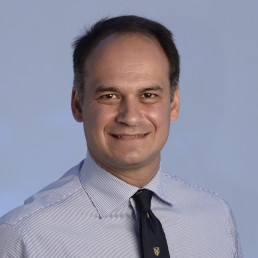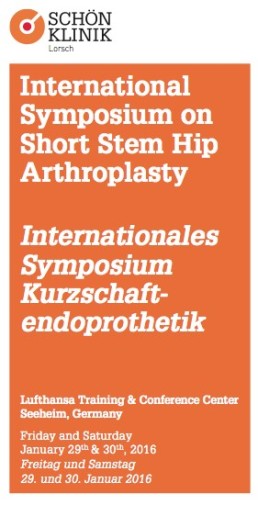

Dear EHS Members,
A very Merry Christmas to you all from the ExCom. The festive season is upon us. December also means the call for abstracts for our 12th EHS Congress in Munich is now open!
Industry Symposia on Tuesday 6th September are booked by Arthrex, LIMA, Mathys and more. Also on the Tuesday all day there will be an excellent Refresher Course on Ultrasound of the Infant Hip by Prof. R. Graf, plus Hip Arthroscopy all day on the Friday (9th September).
While you have your diaries out, you can also write the date and venue for our 13th EHS Congress: The Hague, 20th–22nd September 2018.
Your EHS President, Prof Werner E. Siebert
On behalf of the EHS ExCom, I warmly welcome Dr Goksel Dikmen from Turkey, a new Young Member.
Don’t forget, the deadline for session proposals for EFORT’s 2017 Congress is Friday 4th December.
The MAST 2 course takes place here in Thessaloniki next week. An approved EFORT event, it is a recognised practical course on hip and knee arthroplasty with a faculty of 25 national and international members. It covers Sawbone arthroplasty, has 50 candidates for the surgery and more than 200 attendees for the sessions. The conference offers three fellowships of one month each with a stipend, to observe the activities of our centre of excellence.
Assoc Prof Eleftherios Tsiridis, EHS Secretary General


NATIONAL REPRESENTATIVE, SPAIN
Eduardo Garcia-Cimbrelo
Head of Orthopaedic Surgery & Traumatology
Hospital La Paz
Madrid
The expense of the hip surgery around the world, favours the foundation of the European Hip Society in 1992 in Hamburg. At present, over 30,000 hip prostheses are yearly implanted in Spain. In that year, early cementless prostheses (PCA, Harris-Galante, etc. ) using standard polyethylene and 32-mm femoral head diameter were generally implanted in our country. Osteolysis and loosening were reported very soon. The appearance of tapered stems with alternative bearing surfaces (ceramic-on-ceramic and cross-linked polyethylene) showed excellent results at 20 years. New designs trying to improve these clinical outcomes (resurfacing prosthesis, short-stems) show controversial results.
A great deal of research and development has been performed at different universities and hospitals in our country. Increased number of Spanish presentations at the different EHS Congresses demonstrates this interest. We want to thank the influence of the EHS in the development of hip surgery in Europe, especially in Spain.
Collaboration with another National Hip Societies is necessary for the continuous development of hip surgery in Europe and the world.
NATIONAL REPRESENTATIVE, NORWAY
Arild Aamodt, MD PhD
Head of Orthopaedic Surgery
Department of Orthopaedic Surgery
Lovisenberg Hospital
0440 Oslo
Dr Arild Aamodt attended pre-medical school in Münster, Germany and completed medical school at the University of Oslo. After internship he specialized in general surgery, followed by orthopaedic training and specialization at the Department of Orthopaedic Surgery, Trondheim University Hospital. He was appointed as head of the same orthopaedic department and professor at the Norwegian University of Science and Technology in Trondheim in 2006. In 2011 he relocated to Oslo to serve as consultant orthopaedic surgeon and professor at the Department of Orthopaedic Surgery at Lovisenberg Hospital, from 2015 also as head of orthopaedics.
I have been Nat Rep for Norway for seven 7 years, following Professor Pål Benum, one of the founding members of EHS. The two of us have been collaborating, both clinically and scientifically, for several years and developed the Unique® customized femoral stem in the mid-nineties. The stem has been used in more than 1500 hips with structural deformities and can show a 10-year survivorship of more than 97%, according to the combined Nordic Hip Registry.
Hip surgery in Norway follows tradition and professional guidelines based on the documentation obtained from the Hip Registry over a period of more than 30 years. Hence, until recently, cemented THR have been used in the majority of cases, but uncemented implants with more than 10 years of excellent clinical documentation are now used in the majority of routine cases. The number of implant systems used has been limited and all these efforts have led to a low revision burden. Also, orthopaedic surgeons have been very loyal to the Hip Registry and almost 100% of the hip and knee replacements are registered each year.
Although the Norwegian Orthopaedic Association now has more than one thousand members, only a few are regular members of EHS, but hopefully new members can be recruited in the years to come.



